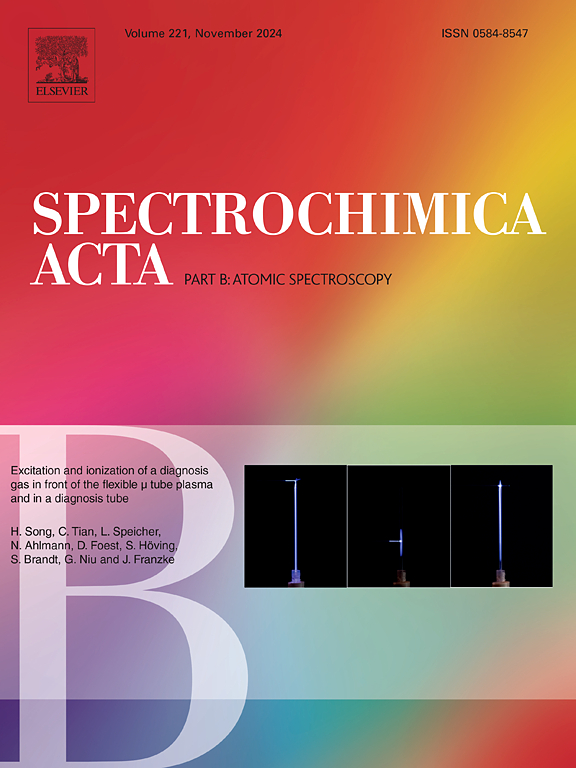XRF data-based statistical clustering of ancient ceramic artifacts and analysing provenance with thermo-mineralogical analysis
IF 3.2
2区 化学
Q1 SPECTROSCOPY
引用次数: 0
Abstract
The chemical composition of a ceramic assemblage 48 sherds from the Museum of Asian Art (MoAA), Universiti Malaya, was determined using X-Ray Fluorescence (XRF) and the statistical analysis of the results was compared with the classification made by the museum curator on the basis of typology. The major objective of this study was to establish a link between the components used to produce Chinese porcelain from Jingdezhen, South China, throughout the different dynasties. A statistical analysis is applied based on 16 major and minor oxides employing hierarchical cluster analysis (HCA), principal component analysis (PCA), biplots, boxplots, and descriptive statistics. Fourier Transform Infrared Spectroscopy (FTIR), X-Ray Diffraction (XRD), and Thermomechanical Analysis (TMA) techniques were used to analyse the material characterization of sherds for classification, resulting in conclusions consistent with provenance and dating. The HCA analysis separated 48 sherds into 5 clusters. Each cluster except cluster 5, lacked of anorthite, which typically forms above temperature 850 °C, indicating that the firing temperature was not exceed 850 °C for clusters 1–4. Similarly, the deformation point for clusters 1–4 were low temperature and high temperature for cluster 5. The observed chemical composition and SiO2/Al2O3 ratio (3.76–4.18) for clusters 1–4 and cluster 5 ratio of 2.92 indicates the Ming and Qing dynasty respectively with origin of Jingdezhen, South China of the examined ceramics. The HCA classification of sherds was based on XRF raw data without combining all experimental techniques like XRD, TMA, and FTIR data. The most representative sherds of each HCA cluster were analyzed thermo-mineralogically. A combination of strong evidence due to material characterization can therefore overcome the hindrance of unreliable sources that cause ambiguity of the sherd's originality and classification.

基于XRF数据的古代陶瓷制品统计聚类及物源热矿物学分析
利用x射线荧光(XRF)测定了马来亚大学亚洲艺术博物馆(MoAA)的48块陶瓷碎片的化学成分,并将统计分析结果与博物馆馆长根据类型学所做的分类进行了比较。本研究的主要目的是在中国南方景德镇的不同朝代中,建立用于生产中国瓷器的成分之间的联系。采用层次聚类分析(HCA)、主成分分析(PCA)、双图、箱线图和描述性统计,对16种主要和次要氧化物进行了统计分析。利用傅里叶变换红外光谱(FTIR)、x射线衍射(XRD)和热机械分析(TMA)技术对碎片的材料特征进行了分析,并进行了分类,得出了与物源和年代一致的结论。HCA分析将48个碎片分成5个簇。除了簇5之外,每个簇都缺乏钙长石,钙长石通常在850°C以上形成,这表明簇1-4的烧制温度不超过850°C。同样,团簇1-4的变形点为低温,团簇5的变形点为高温。团簇1-4和团簇5的化学组成和SiO2/Al2O3比值(3.76 ~ 4.18)分别为2.92,表明所检陶瓷的产地为中国南方景德镇的明清陶瓷。碎片的HCA分类基于XRF原始数据,没有结合XRD, TMA和FTIR数据等所有实验技术。对每个HCA簇中最具代表性的碎片进行热矿物学分析。因此,由于材料特征而产生的有力证据的组合可以克服不可靠来源造成碎片独创性和分类模糊的障碍。
本文章由计算机程序翻译,如有差异,请以英文原文为准。
求助全文
约1分钟内获得全文
求助全文
来源期刊
CiteScore
6.10
自引率
12.10%
发文量
173
审稿时长
81 days
期刊介绍:
Spectrochimica Acta Part B: Atomic Spectroscopy, is intended for the rapid publication of both original work and reviews in the following fields:
Atomic Emission (AES), Atomic Absorption (AAS) and Atomic Fluorescence (AFS) spectroscopy;
Mass Spectrometry (MS) for inorganic analysis covering Spark Source (SS-MS), Inductively Coupled Plasma (ICP-MS), Glow Discharge (GD-MS), and Secondary Ion Mass Spectrometry (SIMS).
Laser induced atomic spectroscopy for inorganic analysis, including non-linear optical laser spectroscopy, covering Laser Enhanced Ionization (LEI), Laser Induced Fluorescence (LIF), Resonance Ionization Spectroscopy (RIS) and Resonance Ionization Mass Spectrometry (RIMS); Laser Induced Breakdown Spectroscopy (LIBS); Cavity Ringdown Spectroscopy (CRDS), Laser Ablation Inductively Coupled Plasma Atomic Emission Spectroscopy (LA-ICP-AES) and Laser Ablation Inductively Coupled Plasma Mass Spectrometry (LA-ICP-MS).
X-ray spectrometry, X-ray Optics and Microanalysis, including X-ray fluorescence spectrometry (XRF) and related techniques, in particular Total-reflection X-ray Fluorescence Spectrometry (TXRF), and Synchrotron Radiation-excited Total reflection XRF (SR-TXRF).
Manuscripts dealing with (i) fundamentals, (ii) methodology development, (iii)instrumentation, and (iv) applications, can be submitted for publication.

 求助内容:
求助内容: 应助结果提醒方式:
应助结果提醒方式:


